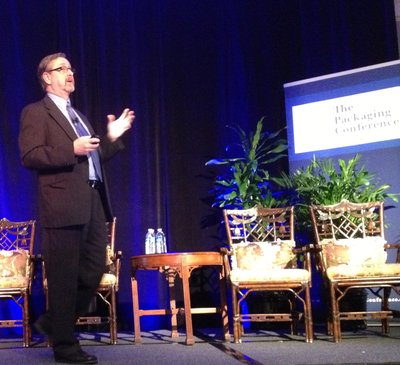3 steps to successful lightweighting of PET bottle production
George Wolfe, Agr International’s Chief Technical Officer, delivered a presentation on successful lightweighting of PET bottle production at the Packaging Conference in Atlanta, Georgia, in February.
Wolfe’s formula for lightweighting success is:
- 100% measurement of production bottles for material distribution.
- Hourly performance checks of key performance parameters such as top load, burst pressure and volume.
- Automated, real-time control of the blow-moulding process.
The theory behind this approach, Wolfe said, is based on the continual management of material distribution during bottle production. Since material distribution is the one attribute that most affects bottle performance, it is critical to manage this aggressively, especially when producing lightweight bottles. Measuring distribution on every bottle produced gives a good view of the process, especially when and where deviations occur.
“If you know when and where the process is changing, you have the ability to react swiftly to make adjustments and manage your process proactively,” Wolfe said.
In addition, hourly performance checks on a sampling of bottles provide confirmation of the efficiency of the process control system. These checks should include top-load and fill-volume testing, and for pressurised products, pressure testing.

“Proactive blow-moulder management is the part that makes it all come together,” Wolfe said. “Even the best blow moulders, with the latest innovations, are subject to production variations.”
Whether due to plant environmental changes, material variations or preform quality - and so forth - events occur that affect material distribution and bottle quality. According to Wolfe, the best way to accomplish this is by performing thickness distribution measurement on every bottle and incorporating automated blow-moulder adjustment to maintain desired material distribution parameters.
Wolfe cited a number of manufacturers using Agr’s Process Pilot automated blow-moulder management system to proactively manage the blowing of very light containers. In these examples, he showed how process variation was dramatically reduced and bottle performance was improved with much less waste.
Most blow-moulding operations today function within a three to four sigma range based on typical sampling testing practices, Wolfe said.
“This may have been adequate in the past. However, in today’s marketplace, with the ever-increasing demand to reduce the material content while maintaining bottle performance, the three to four sigma approach leaves a lot to chance.”
When lightweighting bottle production, a higher standard is necessary to ensure success. To be able to produce consistent, high-quality bottles with minimal waste, manufacturers must work towards achieving a five to six sigma production process.
Achieving a five to six sigma operation is not as difficult as you might think. By incorporating automated process control equipment, this can be achieved quite simply. For those who require assistance to embark on a six sigma project of their own, Agr International offers several programs in this area. One such program is designed to help bottle manufacturers determine their ‘lightweight readiness’. This program includes an analysis of the blow-moulding operation and methodologies to determine process efficiency and identify areas that might compromise lightweighting capabilities.
The Agr team can also provide a number of other services that can assist bottle manufacturers improve their process and profitability by examining blow-moulder operation/performance, feeder process stability, quality sampling methodology, overall process efficiencies and six sigma statistical instruction.
Apricot packaging goes linerless
Blossom Hill Packing has introduced a linerless fruit lid/fibre-based tray combo as part of its...
Edenvale Foods focuses on product innovation with the help of automation
As the functional snackfood business enters its next phase, it became crucial to upscale to...
Intelligent packaging solutions for the bakery industry
There have been many advancements in the bakery industry in recent years, particularly in the...








